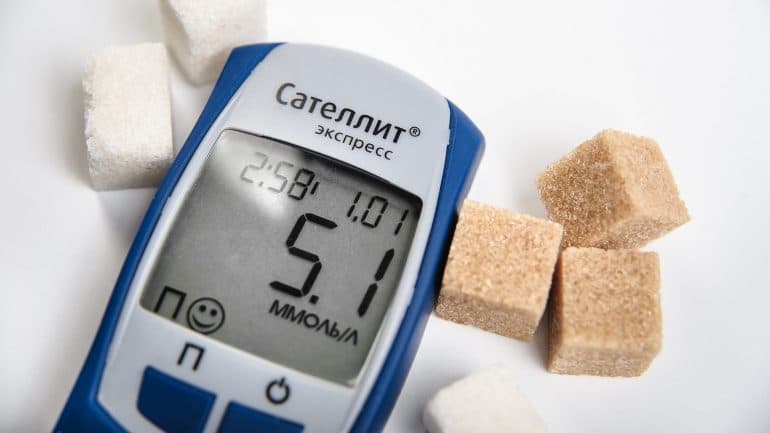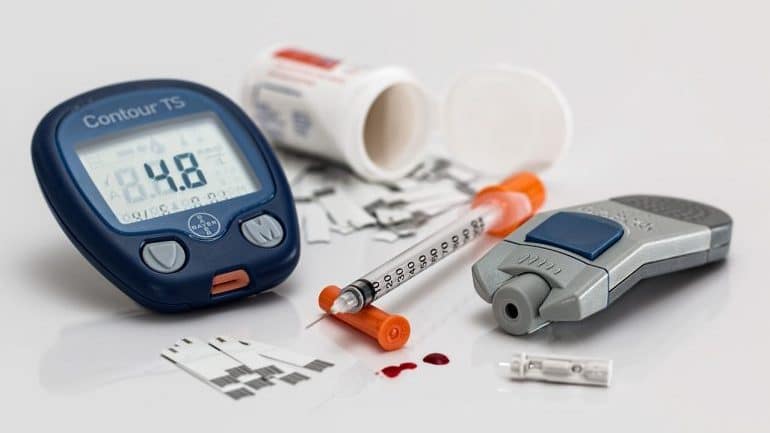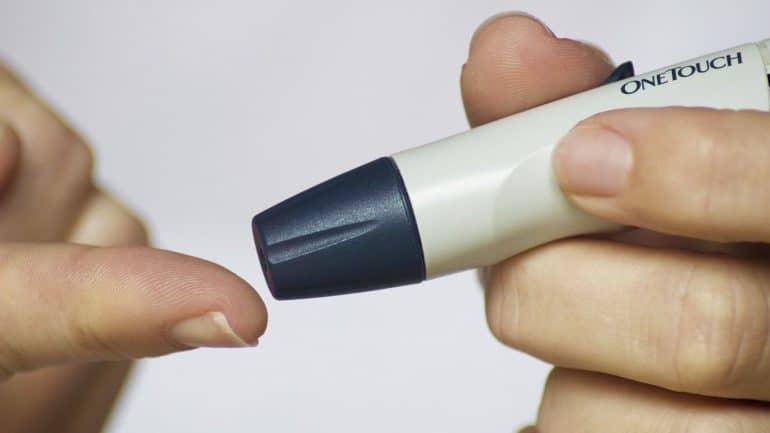28 Important Diabetes Statistics to Know in 2024
written by / January 16, 2022
Diabetes and its many complications, economic costs, and fatalities are having an increasingly severe impact throughout the world. Statistics have shown that this is especially true in the United States, as the obesity epidemic is significantly prevalent there. So what is diabetes, and what are the most important diabetes statistics and facts relevant to it?
To bring the topic closer and find out all that needs to be understood when it comes to diabetes, here are the most important statistics and facts. Read on to learn all about diabetes and the lives of those who suffer from it.
The Top 10 Most Important Diabetes Statistics
- 10.5% of the population in the United States had diabetes in 2018.
- Diabetes is the 7th leading cause of death in the US.
- Each year, 1.5 million American citizens are newly diagnosed with diabetes.
- The prevalence rate of Americans under the age of 20 diagnosed with type 1 diabetes increased by 21% between 2001 and 2009.
- About 32% of individuals with type 2 diabetes develop cardiovascular disease.
- Young individuals under 25 who suffer from obesity are 4 times more likely to develop type 2 diabetes, according to childhood diabetes statistics.
- The annual per capita health care costs attributed to institutional care has decreased from 50% to 36% for diabetes patients.
- 30% of medical costs for diabetes are related to circulation problems reducing blood flow to the limbs.
- Animal insulin is used to treat around 20,000 people. The remaining majority is treated with synthetic “human” (analog) insulin.
- Type 2 diabetes can be improved by at least 150 minutes of exercise every week.
Diabetes and COVID-19 Facts

Here, we’ll be looking at the link between diabetes and COVID-19.
1. There is no conclusive evidence that people with diabetes are more likely to catch COVID-19.
(American Diabetes Association)
Diabetes statistics do not show a link between having diabetes and actually getting COVID-19. So if you have diabetes, it doesn’t necessarily mean that you will catch the virus quicker than someone without diabetes.
2. People with diabetes are more likely to suffer badly if they catch COVID-19.
(American Diabetes Association)
Having diabetes can lead to experiencing harsher symptoms of COVID-19. If you have diabetes and get COVID-19, you may experience worse symptoms and you are more likely to develop complications than someone without diabetes.
General Statistics and Diabetes Facts
There are three main types of diabetes: type 1 diabetes, type 2 diabetes, and gestational diabetes. In this section, we’ll be looking at general facts and stats on all three types of diabetes.
3. 10.5% of the population in the United States had diabetes in 2018.
(CDC)
According to facts about diabetes type 1 and type 2 compiled by the Centers for Disease Control and Prevention, there were more than 100 million adults in the United States with either diabetes or prediabetes. The report also found that as of 2018, around 34.2 million American citizens (10.5% of the population) had this serious condition.
4. 26.8% of US seniors suffer from diabetes.
(ADA)
Researchers at the American Diabetes Association found that the human body handles insulin differently over a lifetime. This study found that younger individuals are usually diagnosed with type 1 diabetes, according to type 1 diabetes statistics, while older people usually suffer from type 2. The reason the elderly are increasingly prone to the condition is simple: they have been exposed to sugar longer than others, so their chances of hyperglycemia are greater. The numbers have shown that the prevalence in seniors in America is quite high, at 26.8% (or 14.3 million seniors).
5. Diabetes is the 7th leading cause of death in the US.
(WHO)
Diabetes is an extremely serious condition, and over time, it can cause significant damage to the heart, eyes, kidneys, and blood vessels. One of the more concerning diabetes facts is that diabetes is among the most common causes of death in the US. Also, adults with the condition have a double or even three-fold increased risk of attaining a fatal heart-related disease.
6. 0.24% of Americans with diabetes are individuals under the age of 20.
(NIH)
The SEARCH for Diabetes in Youth study dealt extensively with the prevalence of diabetes among individuals under the age of 20. Researchers looked into various cases from 2002 to 2012 among around 4.9 million youths at five clinical centers across the United States. These US diabetes statistics by the National Institutes of Health showed that of the 4.9 million, there were more than 11,000 youths under 20 who were suffering from type 1 diabetes, as well as 2,800 youths between the ages of 10 and 19 who had type 2 diabetes.
7. Each year, 1.5 million American citizens are newly diagnosed with diabetes.
(ADA)
The American Diabetes Association collected statistics that show an extremely disturbing trend: around 1.5 million individuals living in the US are diagnosed with the condition every year.
8. Between 2% and 10% of pregnancies in the United States are affected by gestational diabetes.
(CDC)
Gestational diabetes is one of the three types of diabetes, referring to the high blood sugar that develops during the different stages of pregnancy. The diabetes stats demonstrate that even though it can happen at any time during pregnancy, it’s usually diagnosed during the second or third trimester. Overweight women who are expecting are most commonly at risk of gestational diabetes. The statistics have shown that between 2% and 10% of pregnancies in the United States will be affected by the condition annually.
Facts About Type 1 Diabetes

In this section, we’ll be discussing facts and statistics surrounding type 1 diabetes.
9. The prevalence rate of Americans under the age of 20 diagnosed with type 1 diabetes increased by 21% between 2001 and 2009.
(Beyond Type 1)
The prevalence of type 1 diabetes among younger generations is alarming—200,000 people in this age group have it. This is especially a concern because less than a third of the individuals with type 1 diabetes manage to consistently achieve ideal blood glucose levels.
10. According to the type 1 diabetes facts worldwide, the highest rate of incidence is found in Finland.
(NCBI)
Research found that from an epidemiological standpoint, Finland has the highest incidence of type 1 diabetes in the world. It’s followed closely by the island of Sardinia, in Italy. As for the US, there’s an incidence of 40,000 newly diagnosed cases of type 1 diabetes each year.
Type 2 Diabetes Statistics
In this section, we’ll be discussing facts and statistics surrounding type 2 diabetes.
11. 90% of the individuals around the world who have diabetes have the type 2 variant.
(Diabetes.co.uk)
The International Diabetes Federation found that more than 371 million people around the world suffer from either type 1 or type 2 diabetes. On a global level, 90% of the population is living with type 2 diabetes. However, it’s estimated that more than half of these individuals are unaware of their condition.
12. It’s anticipated that the total worldwide deaths from type 2 diabetes will double by 2030.
(NCBI)
Type 2 diabetes statistics worldwide found some shocking results. In future years, diabetes will remain a significant health crisis in the United States, despite prevention efforts and medical advances. Researchers anticipate around double the number of deaths from type 2 diabetes by 2030.
13. About 32% of individuals with type 2 diabetes develop cardiovascular disease.
(NCBI) (Stroke Foundation)
The type 2 diabetes statistics demonstrate that those with type 2 diabetes may have to deal with an increase in fatty deposits or clots on the inside of the blood vessel walls. If these symptoms are not treated on time, the clots may narrow and block the blood vessels in the brain. This automatically leads to a stroke, and potentially death.
The Youth and Diabetes
Even though the complex condition can develop at any time during an individual’s life, type 1 diabetes is most prevalent in children and young adults under 20. Here, we’ll be looking at youth and childhood diabetes statistics.
14. Over 80% of children or adolescents with type 2 diabetes are overweight.
(HealthDay)
The facts about type 2 diabetes show that even though this variant of the disease is most prevalent among adults, the condition is becoming more and more common among children and adolescents. It was also found that more than 80% of children or young adults with type 2 diabetes are overweight. The main reason for this obesity epidemic is a lack of exercise and a poor diet. Further type 2 diabetes facts verify that 40% of the children or adolescents with type 2 diabetes are clinically obese.
15. Young individuals under 25 who suffer from obesity are 4 times more likely to develop type 2 diabetes.
(Oxford Academic)
Researchers have found a clear link between obesity and type 2 diabetes among the younger generations: obese individuals under 25 are four times more likely to develop the condition, according to the statistics on diabetes.
Diabetes Costs
The statistics below show some of the most shocking costs impacting the economy, not to mention the families with a member suffering from diabetes.
16. In 2012, the total direct and indirect estimated cost of diagnosed diabetes in the United States was $245 billion.
(NCBI)
The well-known diabetes stats show that the illness is an increasing economic burden. Even though many studies have looked into this, one study, in particular, found that in 2012, the average cost of diagnosed diabetes was $245 billion, which included $176 billion in direct medical costs and $69 billion in reduced productivity.
17. In 2012, the productivity lost due to reduced work performance from diabetes was 113 million days, or $20.8 billion.
(NCBI)
Similar stats on diabetes found that the productivity loss caused by the reduced performance of diabetics at work in 2012 was around 113 million days, which equals $20.8 billion.
18. The annual per capita health care costs attributed to institutional care has decreased from 50% to 36% for diabetes patients.
(ADA)
According to these statistics of diabetes, the numbers show a smaller fraction of annual per capita health care expenditures for diabetic individuals. In addition, the percentage attributed to outpatient services—besides medications and supplies—showed only a slight increase from 23% to 26%.
19. 30% of medical costs for diabetes are related to circulation problems reducing blood flow to the limbs.
(Medical News Today)
This is one of the more disturbing diabetes statistics in America. The condition is known to affect different parts of the body, thus it’s natural that the medical costs span various areas of specialty. The American Diabetes Association displayed the shocking statistic that around 30% of medical costs associated with the disease are for these types of circulation problems. Also, another 28% of these medical costs are for various conditions related to the nervous system.
Diabetes and Ethnicity
Diabetes, either type 1 or type 2, can be developed by anyone, no matter the age, gender, or ethnicity. Nevertheless, diabetes statistics worldwide have shown that members of certain ethnic minorities display a much higher prevalence of the condition than others.
20. About 14.7% of American Indians and Alaska Natives aged 18 years or older suffer from diabetes.
(CDC)
Most stats on diabetes indicate that the highest prevalence of the condition for both genders occurs among American Indians and Alaska Natives. The data shows 14.5% for men and 14.8% for women when numbers for these groups are combined throughout all regions in the US.
21. 12.5% of people of Hispanic origin suffer from diabetes.
(CDC)
According to additional data from the CDC, United States diabetes statistics indicate that individuals of Hispanic descent over the age of 18 have been shown to display a significant percentage of diagnosed diabetes. The statistics have shown that Mexicans are the most prone to the condition (14.4%), immediately followed by Puerto Ricans (12.4%) and Central/South Americans (8.3%).
22. 11.7% of non-Hispanic blacks aged 18 years or older are diabetics.
(CDC)
In addition, among the US adults, 7.5% of non-Hispanic whites are diabetics, and 9.2% of Asian Americans suffer from this disease.
Treatment

Here are some of the most important statistics and facts on how to treat this chronic disease.
23. There is no cure for type 1 diabetes, nor has any cause been established.
(IDDT)
One of the more interesting facts about diabetes is that scientists haven’t yet come up with a cure for it. Nevertheless, there are different treatments patients with the illness may try, such as various medications, significant lifestyle changes, and other alternative methods. The goal of the treatment for individuals with diabetes is to return blood sugar levels to a normal threshold.
24. Animal insulin is used to treat around 20,000 people. The remaining majority is treated with synthetic “human” (analog) insulin.
(IDDT)
Nearly all stats of diabetes have displayed the fact that the most prevalent way to treat diagnosed diabetes is with insulin. Insulin, a hormone needed for the pancreas to function optimally, is delivered either through an insulin pump, needle and syringe, pen, inhaler, or jet injector.
25. Type 2 diabetes can be improved by at least 150 minutes of exercise every week.
(HealthLine)
Here’s one of the happier facts about diabetes! Studies have shown that making different positive lifestyle changes such as eating a healthier diet and exercising regularly decreases the risk of progressing to type 2 diabetes. The numbers show an astonishing 58% success rate.
26. There’s a tendency for type 2 diabetes to run in families.
(EndocrineWeb)
The most common causes of diabetes include genetics and general lifestyle habits. Thus, the combination of these two factors determines the insulin resistance in the body, leading to the development of this chronic illness. Child type 2 diabetes statistics have found that genetics is a major factor in developing type 2 diabetes, but it is still uncertain as to which genes are responsible for the disease.
27. Patients with diabetes are 10-20% more likely to have lower-extremity amputations than individuals without diabetes.
(NCBI)
Equally important, but much more disheartening, data relating to diabetes concerns diabetes and amputations. Statistics compared the incidence of vascular lower-limb amputation in the diabetic and nondiabetic general population and concluded that the incidence of initial unilateral amputations per 100,000 was 192 for diabetic women and 197 for diabetic men.
28. Treatment with ginger extracts can lead to a 35% reduction in blood glucose levels.
(Diabetes.co.uk)
Ginger, native to Africa, India, and China, has been commonly used for centuries as a spice in various dishes, as well as an alternative herbal treatment for different illnesses. One study on diabetes statistics and ginger examined its effects on individuals with diabetes. The study, published in 2012 suggested that ginger may help improve blood sugar control for patients with type 2 diabetes. A previous study in 2009 reported that two different ginger extracts (spissum and an oily extract) interact with a patient’s serotonin receptors, making it possible to reverse the insulin secretion.
Conclusion
Diabetes is a chronic disease that’s present in individuals who are unable to use and store glucose in their bodies. Individuals who are diagnosed with diabetes need to see an endocrinologist or diabetologist at least once every six months and get appropriate treatment. Also, diabetes statistics up to 2022 show that individuals with the condition must learn how to monitor their blood sugar levels. Do not forget that uncontrolled diabetes may lead to serious health complications. Daily testing is important to make sure that the correct meal plan, exercise routine, and medication are all working optimally to keep blood sugar levels normal.








